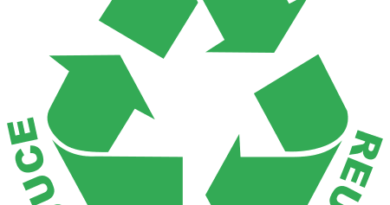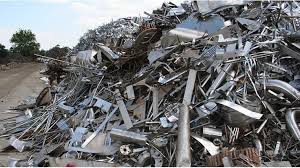Coffee Wastewater Complete Management Guide
Coffee wastewater, often referred to as coffee effluent, is a liquid byproduct created during the cultivation, processing, and brewing of coffee. It may include significant concentrations of dissolved solids, like caffeine and other organic substances, which, if not adequately managed, might harm the environment.
Physical, chemical, and biological treatments for coffee waste water include sedimentation, filtration, and activated sludge systems. Additionally, some coffee growers are putting sustainable procedures in place to lessen the quantity of wastewater produced and its negative effects on the environment.
If not adequately handled, coffee wastewater, sometimes referred to as coffee effluent, may be dangerous to the environment. High quantities of organic matter, caffeine, and other chemicals found in the wastewater may damage aquatic life and cause eutrophication in bodies of water.
Additionally, pipes and other infrastructure may corrode due to the high acidity of coffee effluent. Prior to being discharged into the environment, coffee wastewater must be properly treated. This is usually done via a procedure called “coffee wastewater treatment,” which balances the acidity and gets rid of contaminants.
Physical, chemical, and biological techniques may all be used to accomplish this. Water used in the manufacture of coffee is treated and disposed of via the process of coffee wastewater management. The water used for washing, rinsing, and brewing is included in this.
Ways To Manage Coffee Wastewater Properly

Coffee wastewater can be managed in a number of ways, such as:
(1) Physical therapy
In order to do this, solid particles in the wastewater must be removed using techniques like filtering and sedimentation. Coffee wastewater is physically treated using a variety of techniques, including filtering, flotation, and sedimentation.
Sedimentation is the process of letting solid waste particles settle to a tank’s bottom so they may be taken out. Flotation is the technique of removing solid particles from liquid by employing chemicals or air bubbles.
Filtration is the technique of removing solid particles from wastewater by using a filter. For the most successful coffee wastewater treatment, several techniques are often combined. Sedimentation, flotation, and filtration are examples of physical treatment processes for coffee effluent.
The following benefits of these techniques:
i. Effectiveness: Physical treatment techniques efficiently remove suspended and solid trash from wastewater, enhancing the water’s overall quality.
Read Also: Biomedical Wastes Complete Management Guide
ii. Low cost: Physical therapy techniques are more affordable than chemical and biological ones. Physical treatment techniques are practical for small- and medium-sized coffee processing facilities since they are easy to use and maintain.
iv. Safe and non-toxic: Physical treatment techniques for treating coffee wastewater do not employ chemicals, making them a safe and non-toxic choice.
v. Can be coupled with other treatment techniques: To reach a better degree of water purification, physical treatment techniques can be combined with other treatment techniques including chemical and biological treatment.
(2) Chemical therapy
To neutralize or eliminate contaminants, this entails adding chemicals to the wastewater. These pollutants may be eliminated by using chemical treatment techniques including coagulation, flocculation, and chlorination, which also lessen the wastewater’s negative environmental effects.
Coffee wastewater may also be treated using other techniques including adsorption, oxidation, and biological treatment. However, the wastewater’s exact composition and the required degree of treatment will determine the treatment technique to be used. There are a number of benefits to chemically treating coffee wastewater, including:
i. Pollutant removal: Chemical treatment may successfully remove contaminants from coffee effluent, including suspended particles, organic matter, and caffeine.
ii. Chemicals may be used to change the pH of coffee effluent, making it more appropriate for reuse or disposal.
iii. Odor control: Chemicals may be employed to eliminate the unpleasant smells associated with coffee effluent.
iv. Pathogen control: To make coffee wastewater safer to dump or repurpose, certain chemicals may be employed to destroy pathogens present in the wastewater.
When compared to alternative treatment techniques like membrane filtration or reverse osmosis, chemical treatment may be more economical for treating coffee wastewater.
(3) Use of biological agents
Utilizing microorganisms to degrade organic contaminants in wastewater is one way to do this. Utilizing microorganisms to break down the organic chemicals in the wastewater is known as biological treatment of coffee wastewater.
Anaerobic digestion, activated sludge treatment, and aeration are a few examples of techniques that may do this. The microbes break down the organic components into biomass and release carbon dioxide and water as they do so.
After being appropriately treated, the effluent may be released into the environment or utilized again for irrigation or other uses. However, biological therapy is not always effective and calls for careful process control and supervision.
The biological treatment of coffee wastewater has a number of benefits, such as:
i. Biological therapy techniques are often less costly than chemical or physical treatment techniques.
ii. High efficacy: Coffee wastewater contains complex organic components that microorganisms can break down, resulting in a high level of treatment efficacy.
iii. Low toxicity: Because biological treatment techniques don’t create harmful by-products, the wastewater they treat is safe to release into the environment.
The majority of the organic stuff in the wastewater is consumed by microorganisms, which leads to little sludge formation.
v. Energy recovery: A few of the microorganisms utilized in biological therapy may be used to produce biogas, which is a source of energy.
vi. Flexibility: Biological treatment systems are adaptable to a range of wastewater flow and quality conditions, making them useful in a variety of applications.
Read Also: Chemical Wastes Complete Management Guide
(4) Utilize or recycle
This entails putting treated wastewater to use for non-potable purposes like toilet flushing, irrigation, and other applications. Coffee wastewater may be recycled or reused in a number of ways:
i. Irrigation: Coffee waste may be used to irrigate gardens and farmland. The high concentrations of phosphate and nitrogen in the water may function as fertilizer.
ii. Anaerobic digestion may be utilized to create biogas from the organic materials in coffee wastewater.
iii. Treatment: The wastewater may be purified and made appropriate for reuse in irrigation systems or other purposes by removing contaminants.
iv. Greywater reuse: Reusing treated wastewater for non-potable purposes like toilet flushing, landscape irrigation, or cooling tower make-up water is known as greywater reuse.
Overall, recycling or reusing coffee effluent may help save water and lessen the industry’s negative environmental effects.
(5) Finalization
In order to prevent environmental impact, the treated wastewater must be appropriately disposed of. Coffee wastewater, commonly referred to as coffee effluent, may be disposed of with a number of benefits.
One benefit is that since it includes minerals like nitrogen, phosphate, and potassium, it may be utilized as a source of fertilizer for plants. Additionally, the requirement for freshwater resources may be decreased by treating and reusing coffee effluent for irrigation and other non-potable purposes.
Additionally, it may be processed and utilized to produce biogas, which is a sustainable energy source. Additionally, appropriate coffee wastewater management may avoid contaminating natural water sources, which might harm aquatic ecosystems and human health.
It is important to note that the precise technique for managing coffee wastewater will depend on the kind and amount of wastewater produced, as well as regional rules and legislation. To choose the optimal strategy for a certain facility, it is advised to speak with subject-matter specialists.
Read Also: Guide on How to Produce Bleach (White Stain Remover)


